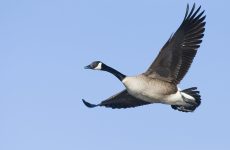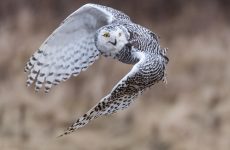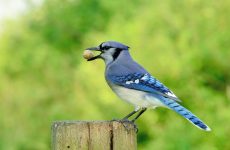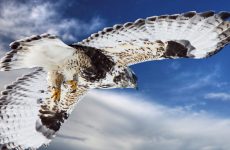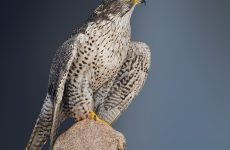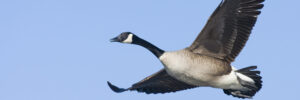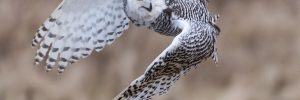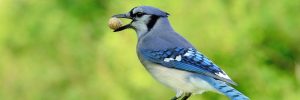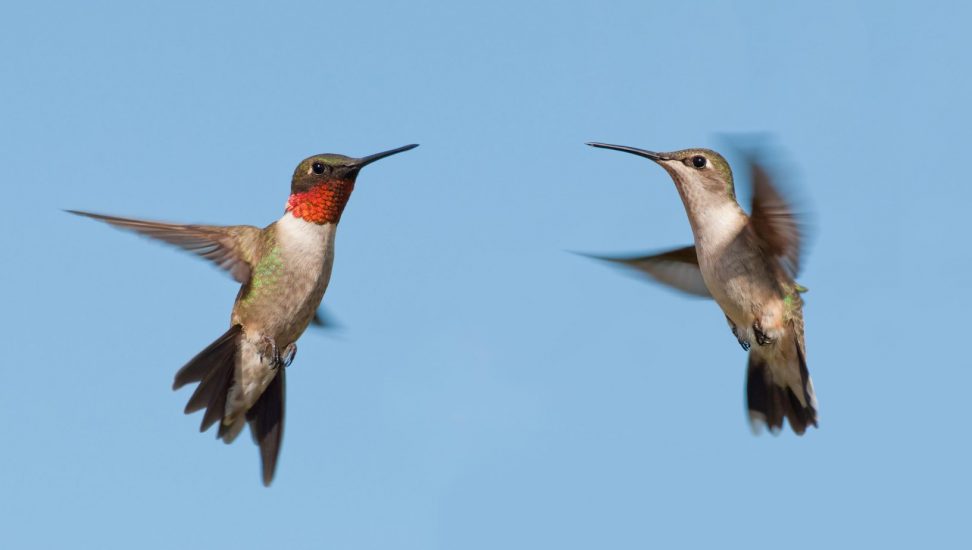
These tiny jeweled birds never fail to impress with a dash of speed and magnificent hovering skills. North Carolina is a great place if Hummingbirds are what you want to see as thousands of Ruby-throated Hummingbirds will make their way north and many will stay in the state.
Ruby-throated Hummingbirds and Rufous Hummingbirds are residents all winter in North Carolina. So don’t take down your hummingbird feeders too soon as they may be here to stay all year.
Species of hummingbirds are classed as resident, seasonal or rare in each state and according to avibase and accepted by the North Carolina Bird Records Committee (NCBRC) of the Carolina Bird Club these are the types of hummingbird in North Carolina in each group:
Resident Species of Hummingbirds of North Carolina:
There are no species of hummingbird classed as residents in North Carolina. However, Ruby-throated Hummingbirds have all been recorded as remaining all year (ebird.org)
Seasonal Species of Hummingbirds of North Carolina:
Ruby-throated Hummingbirds and Rufous Hummingbirds are seasonal species of Humminbird in North Carolina.
Rare/Accidental Species of Hummingbirds of North Carolina:
The Black-chinned Hummingbirds, Buff-bellied Hummingbirds, Broad-tailed Hummingbirds, Anna’s Hummingbirds, Calliope Hummingbirds, Allen’s Hummingbirds, and Broad-billed Hummingbird are all considered to be rare or accidental visitors to North Carolina.
Mexican Violetear and Green-breasted Mangos have been recorded in North Carolina, but not in the past 10 years so they have not been included.
Read on to find out everything you need to know about hummingbirds in North Carolina.
Rushed for time then check out this quick photo guide of male vs female hummingbirds.
9 Species of Hummingbirds North Carolina
1. Ruby-throated Hummingbird
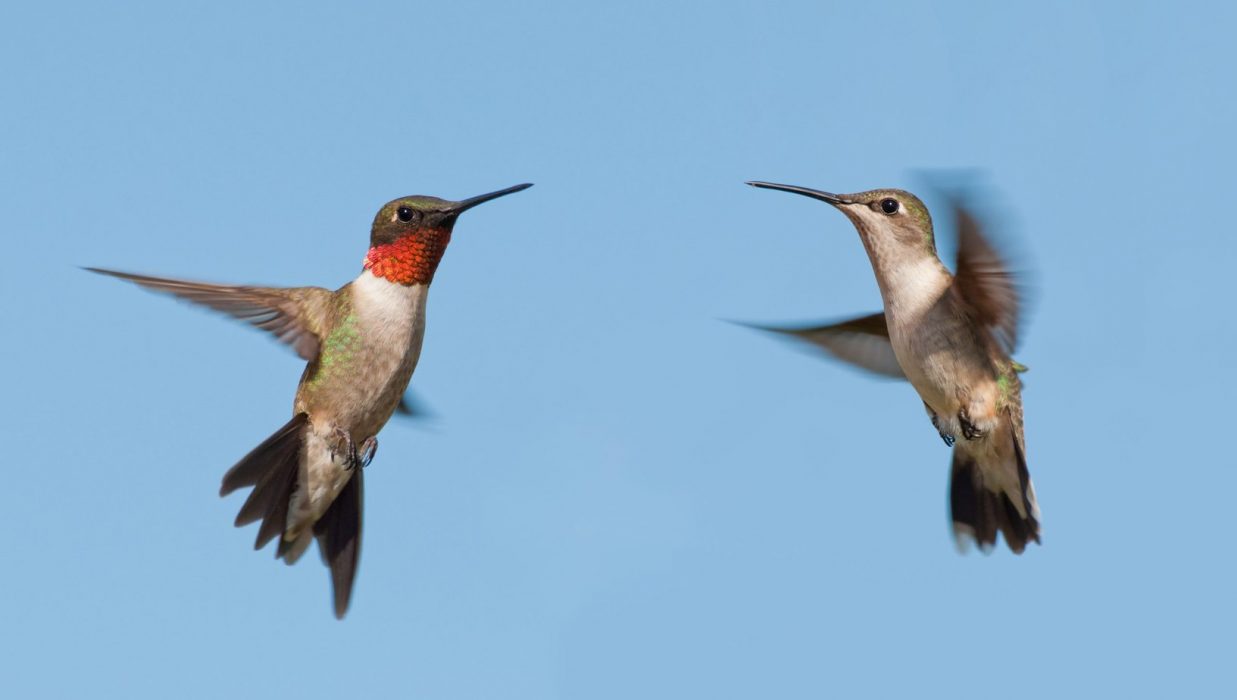
Ruby-throated Hummingbirds of North Carolina are a common sight in summer and they usually arrive in spring at the beginning of April. Males usually arrive first up to one or two weeks before the females. In the fall migration usually occurs between September to Mid-October.
However, some Ruby-throated Hummingbirds have been spending the winter in North Carolina along the coast, so don’t take down those hummingbird feeders they may be here to stay!
The Ruby-throated Hummingbirds are bright green on the back and crown, with a gray-white underside and the males have an iridescent red throat. Female Ruby-throated Hummingbirds are green on the back and white underneath with brownish crowns and sides.
- Length: 2.8-3.5 in (7-9 cm)
- Weight: 0.1-0.2 oz (2-6 g)
- Wingspan: 3.1-4.3 in (8-11 cm)
The Ruby-throated Hummingbird is the only breeding hummingbird in eastern North America, they then migrate further south to Central America. Some migrate over the Gulf of Mexico or some migrate through Texas around the coast. They start arriving in the far south in February and may not arrive in northern states and Canada until May for breeding. They migrate south in August and September.
These tiny birds zip from one nectar source to the next or catch insects in midair or from spider webs. They occasionally stop on a small twig but their legs are so short they cannot walk, only shuffle along a perch.
Flowering gardens or woodland edges in summer are the best places to find them when out. They are also common in towns, especially at nectar feeders.
Male Ruby-throated Hummingbirds can be aggressive in their defense of flowers and feeders. They do not stick around long after mating and may migrate by early August.
Ruby-throated females build nests on thin branches and make them out of thistle or dandelion down held together with spider silk. They lay 1-3 tiny eggs measuring only 0.6 in (1.3 cm)
2. Rufous Hummingbird
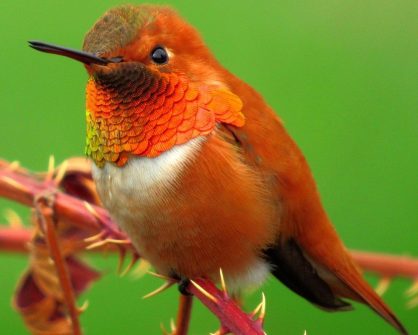
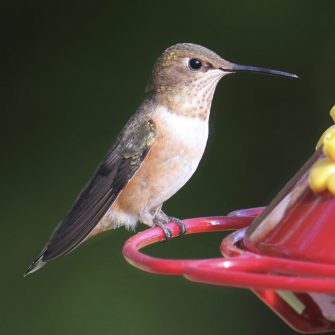
Rufous Hummingbirds are not very common in North Carolina but a few each year do wander this far north in winter, so now another reason to keep your hummingbird feeders out in winter.
Rufous Hummingbirds are bright orange on the back and belly, a white patch below the throat, and an iridescent red throat in the males. The females are greenish-brown on the back and rusty colored on the sides with a whitish belly.
- Length: 2.8-3.5 in (7-9 cm)
- Weight: 0.1-0.2 oz (2-5 g)
- Wingspan: 4.3 in (11 cm)
Rufous Hummingbirds are one of the longest migrating birds relative to their size, traveling up to 4000 miles each way. They breed in northwest Alaska and migrate down to Mexico and the Gulf Coast for winter.
They migrate north along the Pacific Coast in spring and by the Rocky Mountains in late summer and fall.
Rufous Hummingbirds feed mostly on nectar from colorful tubular flowers and from insects such as gnats, midges, and flies. They build a nest high up in trees using soft plant down and spider webs to hold it together. They lay 2-3 tiny white eggs that are about 0.5 in (1.3 cm) long.
They are very aggressive and chase off any other hummingbirds that may appear, even larger hummingbirds or resident ones during migration. During migration, they won’t hang around long and will chase off most other hummingbirds even a chance. They can be found in mountain meadows and in winter they live in woods and forests.
3. Black-chinned Hummingbird
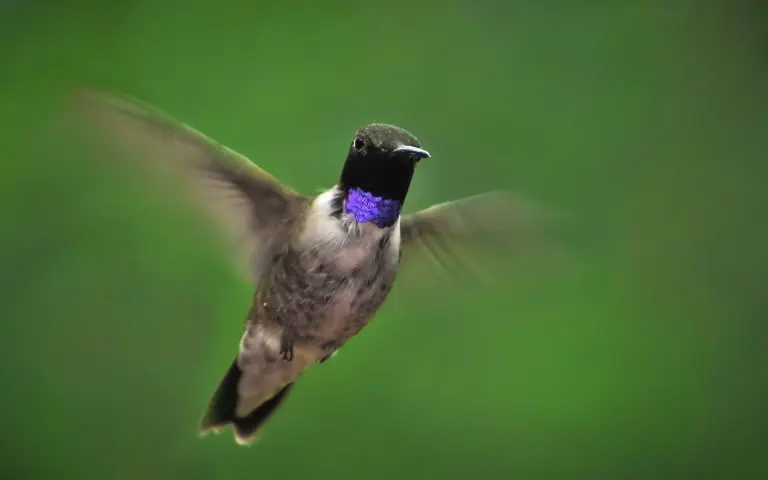
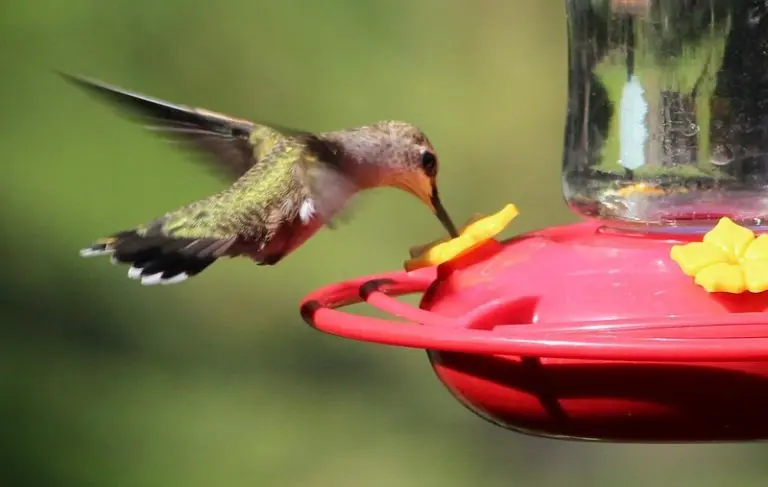
Black-chinned Hummingbirds are rare in North Carolina and a few have made their way up from the Gulf Coast in winter.
Black-chinned Hummingbirds are dull metallic green on the back and grayish-white underneath. The males have a black throat with a thin iridescent purple base and the females have a pale throat and white tips on the tail feathers.
- Length: 3.5 in (9 cm)
- Weight: 0.1-0.2 oz (2.3-4.9 g)
- Wingspan: 4.3 in (11 cm)
Black-chinned Hummingbirds breed predominantly inland in western states and migrate to western Mexico and the Gulf Coast in the winter.
They eat nectar, small insects, and spiders and their tongues can lick 13-17 times per second when feeding on nectar.
Nests of Black-chinned Hummingbirds are made of plant down and spider silk to hold them together and they lay 2 white tiny eggs that are only 0.6 in (1.3 cm)
Black-chinned Hummingbirds can often be seen sitting at the top of dead trees on tiny bare branches and often return to a favorite perch. They can be found along canyons and rivers in the Southwest or by shady oaks on the Gulf Coast.
4. Calliope Hummingbird

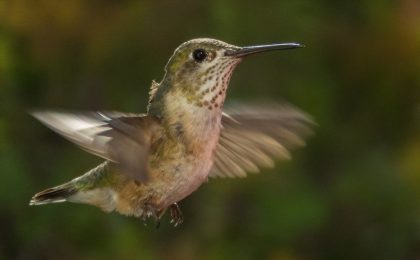
Although considered a hummingbird of western states in summer and Mexico in winter, they have been spending more time in winter along the Gulf Coast and some Calliope Hummingbirds have even made it as far north as North Carolina.
The tiny ping ball-sized Calliope Hummingbird is the smallest bird in the United States but still manages to fly more than 5000 miles each year all the way from Mexico up as far as Canada and back. They also punch above their weight when it comes to defending their territory and even chase Red-tailed Hawks.
Male Calliope Hummingbirds have bright magenta throats, (known as the gorget), glossy green backs and flanks, and a dark tail. Females lack the iridescent throats and are more pinkish-white underneath rather than white in the males.
- Length: 3.1-3.5 in (8-9 cm)
- Weight: 0.1-0.1 oz (2.3-3.4 g)
- Wingspan: 4.1-4.3 in (10.5-11 cm)
Spring migration to the Rocky Mountains is along the Pacific Coast to breeding areas in California, Colorado, and up to northwestern states and Canada. They start migration relatively early to arrive from Mid-April to early May.
Nests are usually on evergreen trees and they may reuse them or build on top of an old nest. Fall migration is by the Rocky Mountains to wintering grounds in southwestern Mexico.
Calliope Hummingbirds are more frequently seen in fall migration between mid-July and mid-September.
5. Buff-bellied Hummingbird
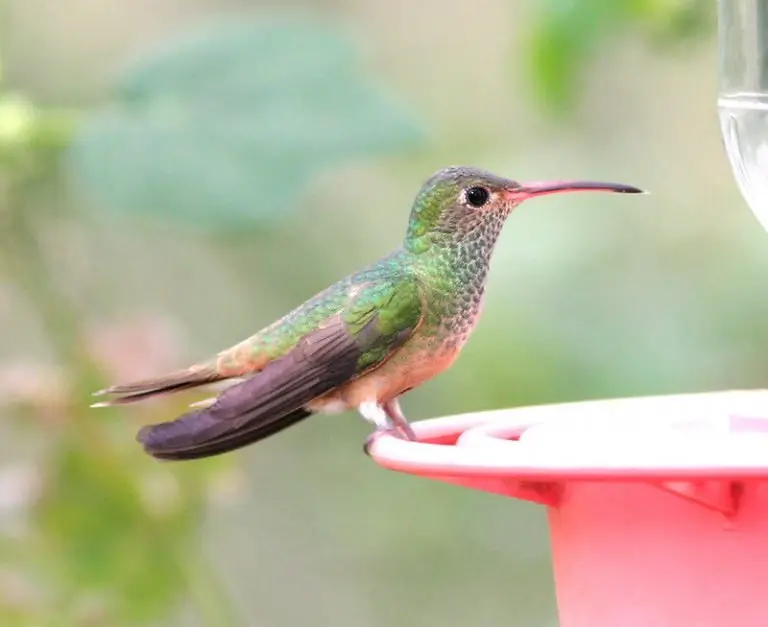
Buff-Bellied Hummingbird (credit: ALAN SCHMIERER)
An accidental species of hummingbird in North Carolina, the Buff-bellied Hummingbird has been spotted only a few times in the state.
The Buff-bellied Hummingbird is medium-sized the bill of the male is red with a darker tip but the females are darker.
- Length: 3.9-4.3 in (10-11 cm)
- Weight: 0.1-0.18 oz (2-5 g)
Buff-bellied Hummingbirds breed in southern Texas and the Yucatan peninsula of Mexico, through to Central America. In winter the Buff-bellied Hummingbird will migrate short distances along the Gulf Coast along to Louisiana and Florida.
Nesting occurs in Texas from April to August in large shrubs or small trees, quite low to the ground. They lay 2 white eggs and may have 2 broods per year.
Semi-open habitats or woodland edges provide the ideal habitat for Buff-bellied Hummingbirds and they will also visit backyards for flowers or nectar feeders. Small insects also make up some of their diets.
You can attract more Buff-bellied Hummingbirds with nectar feeders and red tubular flowers such as Turk’s cap and red salvia.
Find out how to attract hummingbirds with plants and flowers. Also how to make your own sugar water.
6. Broad-tailed Hummingbird
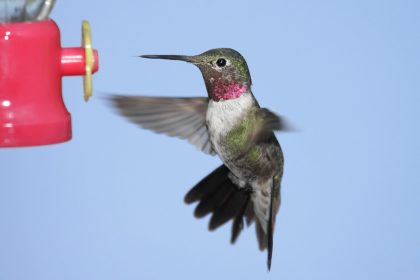
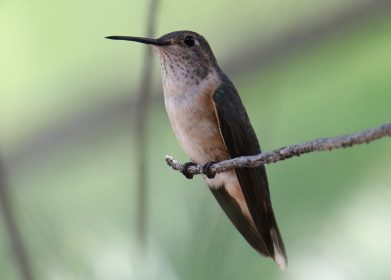
An accidental species of hummingbird in North Carolina, the Broad-tailed Hummingbird has been spotted only a few times in the state.
Broad-tailed Hummingbirds live in higher elevations and are iridescent green on the back, brownish in the wings, and white on the chest and into the belly. Males have an iridescent rose throat, females and juveniles have green spots on their throats and cheeks.
- Length: 3.1-3.5 in (8-9 cm)
- Weight: 0.1-0.2 oz (2.8-4.5 g)
Broad-tailed Hummingbirds breed in high meadows and open woodlands between 5,000 – 10,000 feet elevation in the mountainous west, between late May and August, before migrating to southern Mexico for the winter.
Due to the cold at higher elevations, the Broad-tailed Hummingbird can slow their heart rate and drop their body temperature to enter a state of torpor.
Nectar from flowers is the usual food of hummingbirds and Broad-tailed Hummingbirds drink from larkspur, red columbine, sage, scarlet gilia and they will also come to hummingbird nectar feeders. They supplement their diet with small insects and will feed their young on insects too.
Broad-tailed Hummingbird nests are usually on evergreen or aspen branches and are made with spider webs and gossamer under overhanging branches for added insulation during cold nights.
7. Anna’s Hummingbird
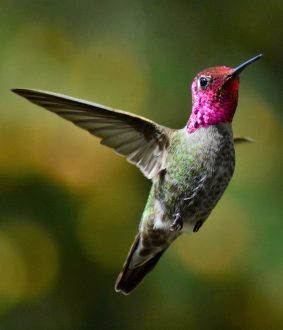
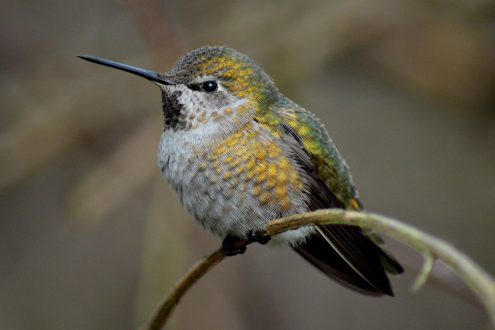
An accidental species of hummingbird in North Carolina, Anna’s Hummingbirds has been spotted only a few times in the state.
Anna’s Hummingbirds are tiny birds that are mostly green and gray. The male’s head and throat are iridescent reddish-pink the female’s throat is grayish with bits of red spotting.
- Length: 3.9 in (10 cm)
- Weight: 0.1-0.2 oz (3-6 g)
- Wingspan: 4.7 in (12 cm)
Unusually Anna’s Hummingbirds do not migrate and are the most common hummingbird along the Pacific Coast. They make a dramatic dive display during courtship as the males climb up to 130 feet into the air before diving back to the ground with a burst of noise from their tail feathers.
Habitats of Anna’s hummingbirds are often backyards and parks with large colorful blooms and nectar feeders but they are also found in scrub and savannah.
Anna’s Hummingbirds’ nests are high in trees around 6 – 20 ft and they often have 2-3 broods a year.
8. Allen’s Hummingbird
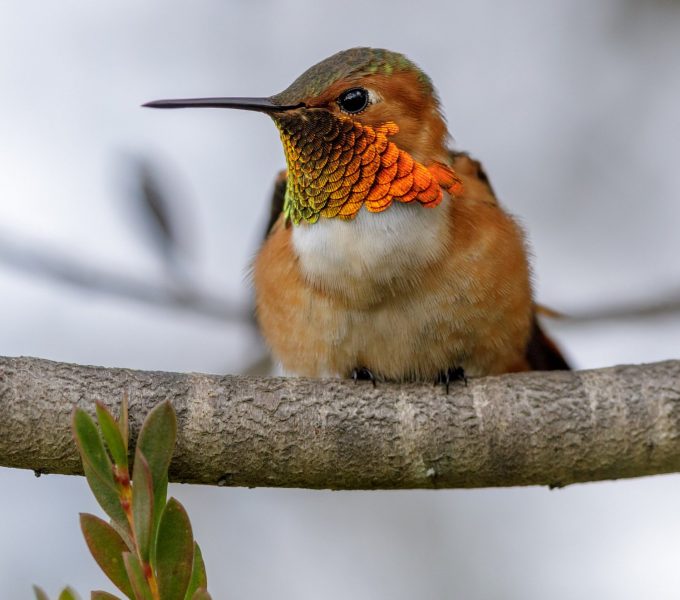
An accidental species of hummingbird in North Carolina, the Allen’s Hummingbird has been spotted only a few times in the state.
Allen’s Hummingbirds look very similar to Rufous Hummingbirds so it’s hard to tell them apart in the narrow band of coastal forest and scrub they inhabit between California and Oregon.
Male Allen’s Hummingbirds have iridescent reddish-orange throats and orange bellies, tails, and eye patches. Both males and females have long straight bills and coppery-green backs but the females lack the bright throat coloring.
- Length: 3.5 in (9 cm)
- Weight: 0.1-0.1 oz (2-4 g)
- Wingspan: 4.3 in (11 cm)
The difference between Allen’s and Rufous Hummingbirds is the narrow outer tail feathers in Allen’s Hummingbird. They build nests at no fixed height near shady streams and have up to 3 broods a year.
Allen’s Hummingbirds spend winter in Mexico and migrate as early as January up to the Pacific Coast in California and Oregon. Some remain resident in central Mexico and around Los Angeles.
9. Broad-billed Hummingbird
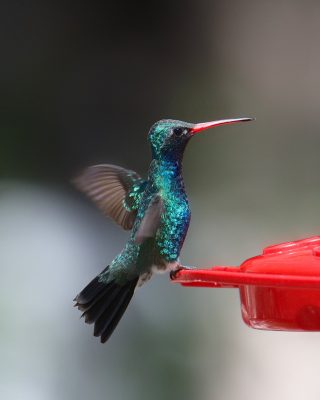
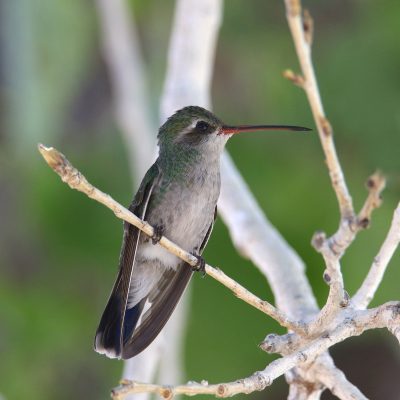
An accidental species of hummingbird in North Carolina, the Broad-billed Hummingbird has been spotted only a few times in the state.
Broad-billed Hummingbirds are brilliantly colored, even among hummingbirds. The males are rich metallic green all over with a blue throat that extends down the breast. Females have a pale belly and both males and females have red beaks that are black-tipped and wide near their heads.
- Length: 3.1 – 3.9 in (8-10 cm)
- Weight: 0.1-0.1 oz (3-4 g)
Broad-billed Hummingbirds are resident all year in central Mexico and the Pacific Coast of Mexico. Some birds migrate north into mountain canyons in southern Arizona and New Mexico, for breeding and a few remain all year near the Mexican border.
Canyon streams and mountain meadows provide the ideal foraging areas for Broad-billed Hummingbirds but they will also visit backyard feeders. Nests are built quite low to the ground at about 3 feet near streams.
Find out how to attract hummingbirds with plants and flowers. Also how to make your own sugar water.
Also, check out these great articles about birds in North Carolina:
Best Nectar Feeders to Attract Hummingbirds in North Carolina
This site is reader-supported and as an Amazon Associate, I earn a commission if you purchase a product I recommend at no extra cost to you.
The more the merrier with Hummingbirds is what I think and they can be territorial so getting a few hummingbird feeders around your backyard is best. We have picked the best hummingbird feeders for you to get hummingbirds buzzing all over your yard.
- Best window mounted hummingbird feeder – Perky-Pet Window Mount Hummingbird Feeder
- Try to count the wingbeats of the next hummingbird to use this feeder!
- Best all-round feeder – First Nature Hummingbird Flower Feeder
- Not only does this feeder feed a lot of hummingbirds at once it is so reasonably priced that you want to get more of them to fill up your yard with the buzz of hummers.
- Best decorative feeder– Grateful Gnome Hummingbird Feeder
- This Hand Blown Glass feeder not only looks great but attracts a lot of hummers.
How to Attract the Hummingbirds of North Carolina to Your Backyard
If you would like to attract more hummingbirds to your yard in North Carolina here are some tips:
- Provide more hummingbird feeders and spread them around your yard to create more territories.
- Ensure you clean and change the hummingbird nectar regularly. You can either buy nectar or make your own, but don’t use any with red dye.
- Provide a water feature such as a birdbath fountain or stream. Ensure that the water is clean and not stagnant
- Grow native plants that will provide food such as salvias, fuschias, trumpet creeper, lupin, columbine, bee balms, and foxgloves
- Don’t use pesticides and herbicides as these may be toxic to birds.
- Provide small perches of thin branches bare of leaves for hummingbirds to rest.
How to Identify Birds in North Carolina
Here are some tips to help you identify birds whether you are out birding or backyard bird watching in North Carolina:
- Size – Size is the easiest thing to notice about a bird. Birds are often measured in inches or centimeters in guide books. It’s best to take a note of the bird in terms of small, medium, or large to be able to look for it later. A small bird is about the size of a sparrow, a medium bird is about the size of a pigeon and a large bird is the size of a goose.
- Shape – Take note of the silhouette of the bird and jot it down or draw the outline. Look at tail length, bill shape, wing shape, and overall body shape.
- Color pattern – Take a note of the main color of the head, back, belly, and wings, and tail for the main color and then any secondary colors or patterns. Also take note of any patterns such as banding, spots, or highlights.
- Behavior – Are they on the ground or high up in the trees. Are they in flocks or on their own? Can you spot what they are eating?
- Habitat – Woodlands, parks, shrubs, grasslands or meadows, shore or marsh.
- Use a bird identification app such as those created by ebird or Audubon

